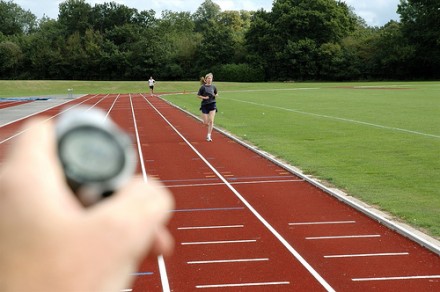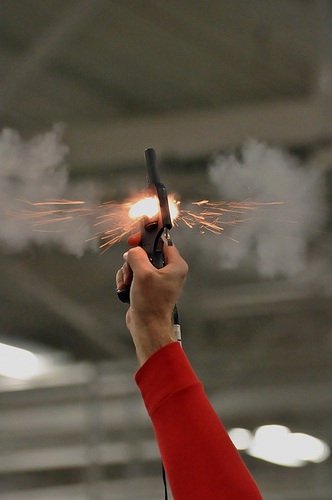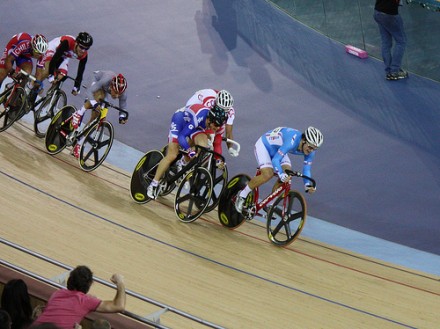Have the Olympics kept pace with precision timing?
London 2012 will be the 30th modern Olympic Games, and in its 116-year history, UY98UZDDVGGJ the Olympics have gone through many changes. New events have been introduced, records have been broken and different cities have played host to the games, but one constant has remained – the need to time competitors accurately during the different events.
Timekeeping has always been essential for the Olympics, but it has gone through some dramatic changes since the first modern Olympics were held in Athens in 1896. Back then, the most accurate timekeeping devices were mechanical stopwatches, but technological advances have seen electronic clocks, crystal oscillators, atomic clocks and GPS timing enter the world of Olympic timekeeping enabling it to become ever more accurate and precise. Competitors in London will be able to win or lose events by 1,000th of a second, which is 40 times faster than an eye can blink. However, things were very different a century ago.
Stopwatches
Before the advent of electronic devices, the only way to time an Olympic event was to use mechanical stopwatches. This posed problems for official Olympic timekeepers, who had to synchronize their stopwatches and in some events, a timekeeper was needed at the start line and another at the finishing tape. While this was the most accurate method at the time, this early method of timekeeping would have seen discrepancies in official times of several seconds. Today, Olympic timing has to be accurate to the millisecond, with no margin for error, and that requires far more advanced technologies than stopwatches and pieces of paper.

Electronic timing
The first big step in Olympic timing can in 1952, when Omega, official Olympic timekeepers since 1936, introduced the first use of electronic timing during the Helsinki Winter Games. Electronic timing wasn’t just more accurate than mechanical stopwatches, bit also it allowed for innovations such as the inclusion of official timing on stadium displays, giving the spectators a better understanding of how well the competitors were doing. Each subsequent Olympics saw the introduction of new technologies to improve further the accuracy of Olympic timing, such as transponders worn by competitors that can reveal not just the start and finish times, but also acceleration too, and innovation is continuing all the time.
Modern timing
Perhaps the one event where accuracy in timing is the most essential is the 100-metre sprint. As runners can complete the distance in less than ten seconds, precision timing is crucial. These days, everything from the starting gun and starting blocks to the finish line are part of the timing process. When the athletes crouch down at the blocks, contact pads measure the pressure. After the timing official pulls the trigger of the starting gun, the timer starts. Such is the drive for accuracy and fair play in the modern Olympics, the sound of the gun is actually broadcast through speakers on each competitor’s starting block, so no unfair advantage can be had by being closer to the starting gun, even though the speed of sound would create an advantage in the milliseconds. Furthermore, if one of the contact pads on the starting block detects a lift of pressure before the starter fires the gun, false start can be called. However, if all competitors start properly, a laser at the finish line finalises the timing once the lead runner breaks through it.

Photo finish
Of course, many running events can involve exceptionally close finishes. Photo finishes have been in use since 1932, when Omega introduced the Kirby camera. Now, high-speed digital video cameras at the finish line record up to 2,000 times a second. The camera is synchronised to the other timing devices and serves as both a photo finish system and a timer. At the end of the race, a composite image showing the photo finish can then be broadcast on video displays within 30 seconds, often before judges have made the final decision as to who has actually won.

Time synchronisation
The accuracy of modern Olympic timing is made possible with the use of high quality timing devices, accurate synchronisation and GPS atomic timing. Regular quartz oscillators are fairly accurate, but they still drift, which means without regular synchronisation, their accuracy would falter. To ensure all timing devices can achieve millisecond accuracy and precise synchronisation with one another, all Olympic timing devices are synchronised with GPS atomic clocks several times a day. GPS satellites all have atomic clocks onboard, as it is how satellite navigation works. By triangulating the timing signals, sat nav devices are able to calculate distance by working out how long a signal has taken to arrive from the satellite. Atomic clocks have to be used for this because the signals travel at the speed of light, so just a millisecond of inaccuracy could see navigational information out by a 1000 km.
Using such an accurate time source, means that official Olympic timekeepers can ensure that they meet the International Olympics Committee commitment to having the events at the games timed to within a thousandth of a second (millisecond). This is a huge difference to Olympic timing compared to the earliest Olympic Games, where manual stopwatches were used and timing could be out by several seconds.
Atomic clock precision
The Olympics is not the only organisation that requires ultra precise timing. Atomic clock precision is becoming increasingly important for all sorts of technologies. Systems such as air traffic control, CCTV networks, speed cameras and even modern computer networks that communicate over the internet all require atomic clock timing precision. Think of the problems that two computer networks trying to conduct transactions over the internet would face without precise synchronisation. Timestamps are the only information computers can use to know when or if a transaction or process has taken place and because computers can conduct hundreds of tasks every second, differences of a fraction of a second could lead to errors.
However, maintaining exact synchronisation is not a simple task. While most computers have internal timing chips, these are quartz oscillators and are prone to drift. If two clocks are set at the same time, it doesn’t take long before they begin to drift, and within a few weeks, different machines could have timing several seconds apart. For this reason, computer networks and other precise technologies adopt the same concept as Olympic timing system and regularly synchronise with atomic clocks to maintain synchronisation.
Network Time Protocol
The threat computer networks face because of poor synchronisation is as old as the internet. For this reason, a software protocol was devised in the very early days of online communication. Network Time Protocol (NTP) is a system that allows all computers on a network to synchronise regularly with a single source time. NTP checks the time on each device, and if it is found to differ to the source time, by even a millisecond, it adjusts the time to ensure complete accuracy. Using NTP, networks of hundreds of machines can be kept synchronised to within a few milliseconds of a single source time. Of course, for networks that communicate across the internet, they also need to ensure synchronisation over the internet.
Coordinated Universal Time
To allow networks across the globe to synchronise with each other, a global timescale was introduced in the 1970s. Unlike local timescales, Coordinated Universal Time (UTC) is the same everywhere on the globe, although local systems can still display time zone-adjusted clocks. Because UTC is based on the time told by atomic clocks, it is always accurate and precise, and is what most technology systems and computer networks use as a source time for NTP synchronisation. Just as Olympic timing devices use GPS as a source of atomic time, so can computer networks by using an NTP time server.
NTP time server
NTP time servers are dedicated devices that receive atomic clock timings for NTP synchronisation. While many make use of GPS signals, this is not the only source of UTC time available. Some NTP servers can receive radio waves broadcast from physics laboratories. In the UK, this signal is known as MSF as is broadcast from NPL (National Physical Laboratory) from their transmitter in Cumbria. In North America, NIST (National Institute for Standards and Time) broadcast the WWVB signal from Boulder, Colorado. Other countries have similar systems in place, such as the German DCF signal. Because these devices are transmitted via long wave, they don’t require a rooftop antenna unlike GPS time servers, which makes them a better solution for locations without rooftop access.
Internet time
There are plenty of sources of UTC time available on the internet too, and many home PCs can synchronise to these to maintain accurate time. However, these online sources of time are not accurate, reliable or secure enough to be trusted by large computer networks or technologies that rely on precise time. For these organisations, the security and reliability of GPS signals and radio transmissions ensure they can maintain accurate and precise time without fear of security breaches or the risk of becoming unsynchronised due to an inaccurate timing source.